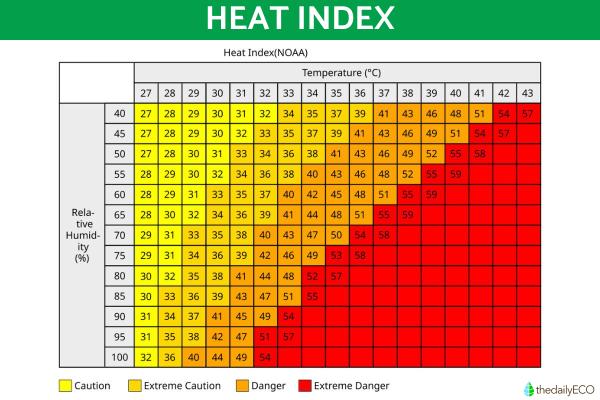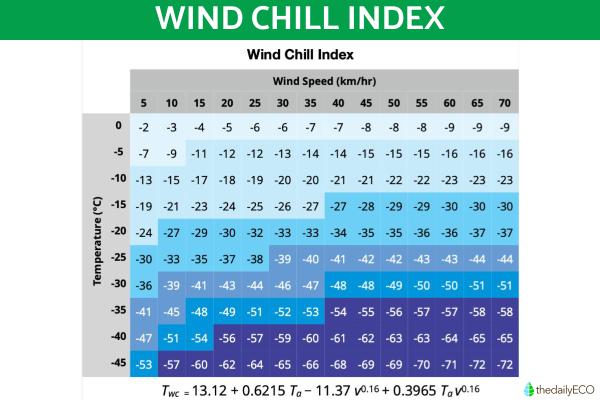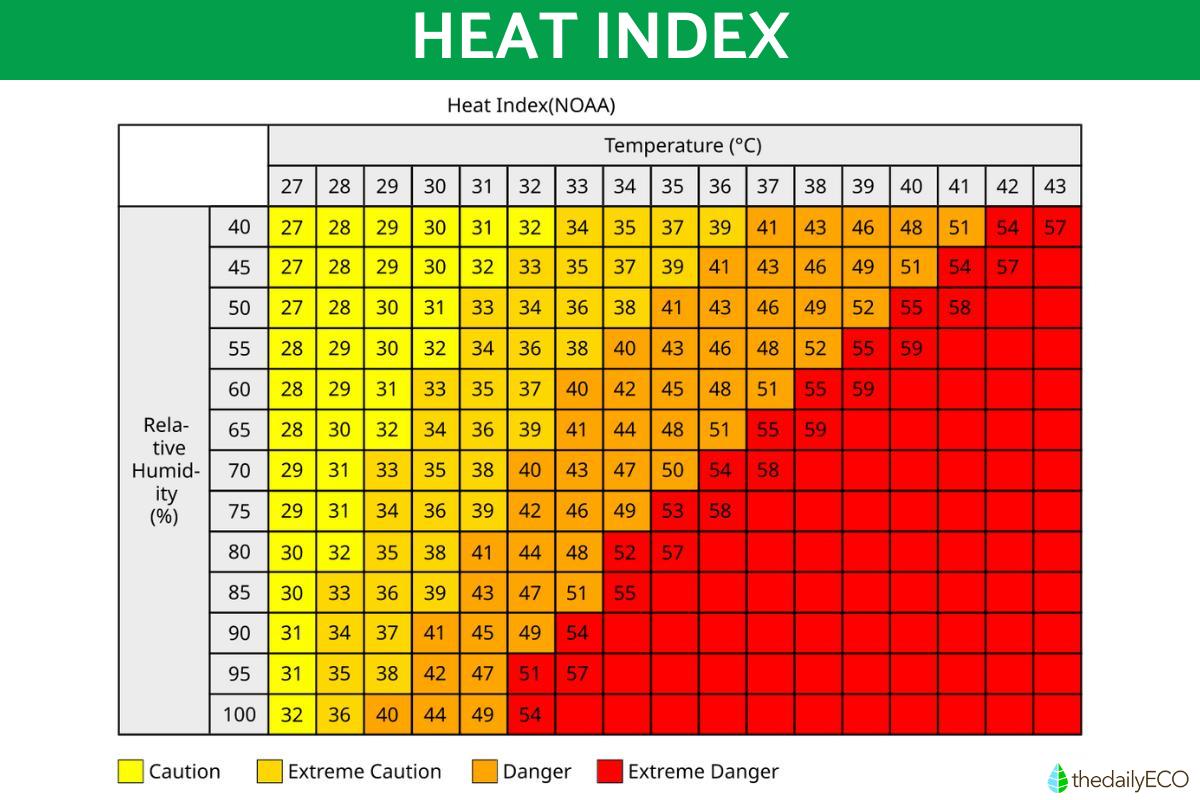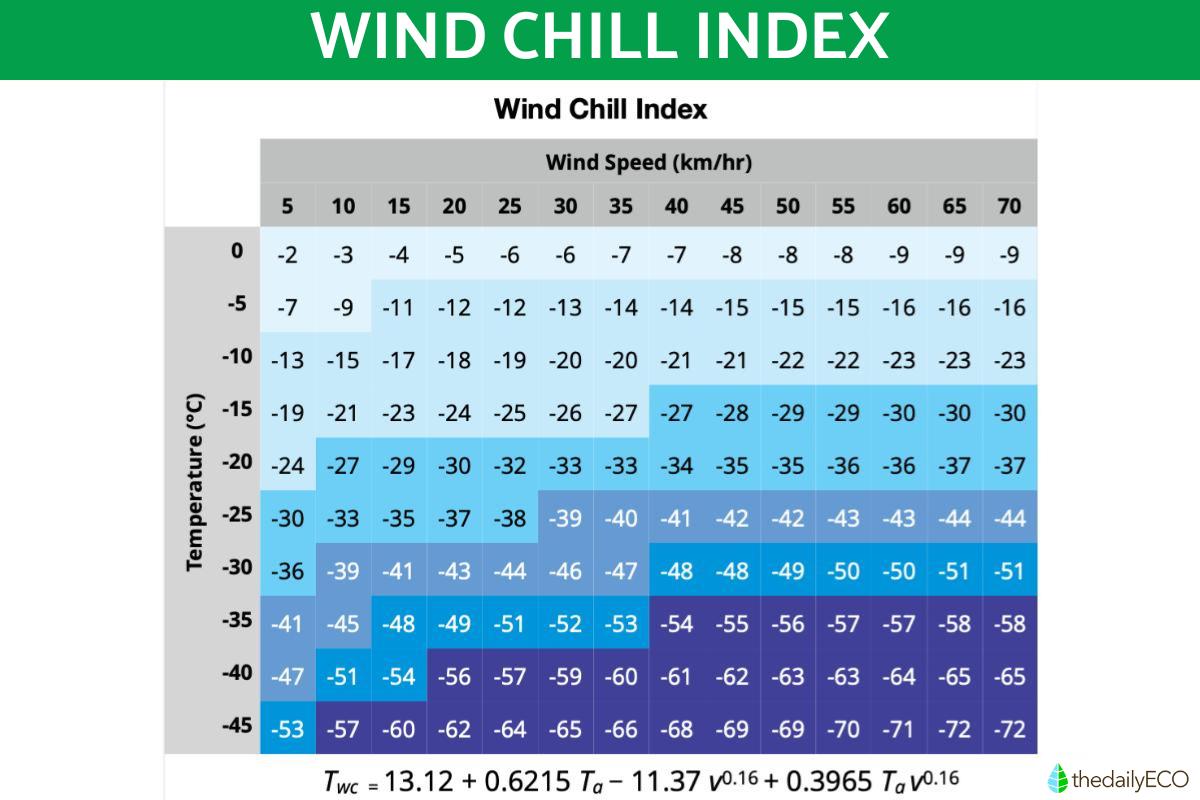What Is Wind Chill and How Is It Calculated?


Thermal comfort refers to how we feel mentally about the ambient temperature of our environment, meaning how we body perceive it in our body. While individuals will have different perceptions for both physical and psychological reasons, external factors such as wind, humidity and solar radiation have significant effects. When we apply this to cold weather, we can consider it to be the wind chill. This concept is key in meteorology, as it allows a better understanding of climatic conditions and their impact on human well-being. It is for this reason we may see a difference between the actual temperature and the ‘real feel’.
In this thedailyECO article, we ask what is wind chill and how is it calculated? We provide wind chill charts for both warm and cold temperatures to better explain this process.
What is wind chill?
Thermal comfort is the temperature that we actually perceive in our body. It does not always coincide with the actual temperature of the environment. This is because factors such as wind, humidity and solar radiation can make us feel colder or hotter than the thermometer indicates. Physical and mental health can also affect thermal comfort, but wind chill focuses on the environmental factors which affect it.
For example, say it is a winter's day with a temperature of 41ºF/5ºC. The temperature may feel a few degrees cooler, because moving air from the wind accelerates the loss of heat from our skin. On a summer day with a temperature of 86ºF/30ºC and high humidity, we may feel even hotter,. This because sweat does not evaporate easily and the body has more difficulty cooling down.
The changes in our perception is why wind chill is an important piece of information in weather forecasts. It helps us better prepare for the actual weather we'll experience when we leave home, rather than relying on readings alone.
Read our article on the difference between climate and weather for more background information.
Wind chill in summer (heat index)
In summer, the perceived temperature is often higher than the actual temperature. This is especially the case in places with high humidity. Our body regulates temperature through sweat, which evaporates and cools us down as it is secreted through our pores. When the air is very humid, sweat evaporates more slowly due to saturation of moisture. The skin stays warm, making us feel hotter than the thermometer indicates.
This phenomenon is measured by the heat index, a value that combines temperature and humidity to indicate how hot it actually feels. For example, if the thermometer reads 89.6ºF/32ºC, but the humidity is 70%, the wind chill could be 104ºF/40ºC or more.
Other factors affect wind chill in the summer. These include direct exposure to the sun, lack of wind and the number of surfaces that absorb heat can further increase the feeling of heat. Asphalt in cities absorbs heat, meaning we may feel cooler in the country at the same temperature. It is recommended to stay hydrated, avoid prolonged exposure to the sun and wear light, breathable clothing on very hot days to help the body regulate temperature.
Check out the summer wind chill chart below and learn more with our article explaining the difference between temperature and heat.

Winter wind chill (wind chill index)
The perceived temperature in winter is often lower than the actual temperature, especially when there is wind. This happens because moving air removes the layer of heat that our body generates on the skin more quickly. This causes us to lose heat more easily and feel colder than the thermometer indicates.
This effect is measured by the wind chill index, which calculates how much colder the temperature feels based on the wind speed. For example, if the actual temperature is 0ºC/32ºF, but there are 30 mph winds, the wind chill could drop to 14ºF/-10ºC or less.
In addition to wind, humidity also plays a role. Although we generally associate humidity with heat, in winter it can intensify the feeling of cold. A humid environment reduces the body's ability to keep warm, because humid air transfers heat faster than dry air.
In cold, windy climates, it is important to dress in layers, cover your extremities (hands, ears and feet are the first to get cold) and avoid prolonged exposure to extreme temperatures. This is necessary to prevent problems such as hypothermia or frostbite.
Take a look at the wind chill chart for winter below and discover what is considered a strong wind with our related guide.

How to calculate wind chill
Calculating the perceived temperature is not as simple as subtracting or adding a few degrees to the actual temperature. Determining the wind chill factor includes considerations such as wind, humidity and solar radiation. There are specific formulas to estimate it in different weather conditions.
Cold climates
A formula developed by meteorologists is used that combines air temperature and wind speed. The most common version is:
ST =13.12+0.6215 T −11.37 V 0.16 +0.3965 TV 0.16
Where:
- ST = Wind chill in degrees Celsius
- T = Air temperature in degrees Celsius
- V = Wind speed in km/h
This formula is only valid when the temperature is 10ºC or less and the wind speed exceeds 4.8 km/h. If the wind is very strong, the wind chill may be several degrees lower than the actual temperature, increasing the risk of frostbite or hypothermia.
Warm and humid climates
The perceived temperature is calculated using the Heat Index, which relates temperature and relative humidity. One of the approximate formulas is:
IC =−8.784+1.611 T +2.34 H −0.146 TH
Where:
- IC = Heat index in degrees Celsius
- T = Temperature in degrees Celsius
- H = Relative humidity in percentage
This index is relevant when the temperature is 27ºC or more and the humidity is high. If the humidity is above 60%, the thermal sensation can increase significantly, causing fatigue, dehydration or heat stroke in extreme cases.

Factors that influence wind chill
As we have explained, the perceived temperature does not depend only on the actual air temperature. A combination of factors affect the way our body perceives cold or heat. The following combined are known to make up the wind chill factor:
- Wind: this is a key factor in thermal sensation, especially in winter. When there is wind, the moving air removes the heat that the body generates on the skin more quickly, making us feel colder than the thermometer indicates. The stronger the wind, the greater this effect.
- Humidity: humidity plays a crucial role in the sensation of heat, especially in summer. When the air is very humid, the sweat we produce to cool down evaporates more difficultly, preventing the body from regulating its temperature efficiently. This makes us feel hotter than we really are.
- Sun exposure: solar radiation directly influences the perceived temperature. In strong sunshine, a moderate ambient temperature can feel much higher, especially if there is no wind. This is because our body absorbs the sun's energy and heats up faster.
- Surfaces and environment: the type of surface and the environment we are on also affect the sensation of heat. In cities, buildings and asphalt absorb and retain heat, increasing the temperature compared to rural areas, where there is more vegetation that helps to cool the air. This effect is known as the urban heat island effect. In winter, cold surfaces such as snow or water can amplify the sensation of cold by reflecting wind and humidity into the environment.
- Clothing and physical activity: clothing influences how we feel about temperature. In winter, thermal and layered clothing helps to conserve body heat. Light and breathable clothing helps sweat evaporate and keeps the body cool in summer. Physical activity also alters the way we feel about temperature. During exercise, the body generates more heat, so the temperature feels higher. In cold climates, this can be an advantage, but in hot climates it can increase the risk of dehydration and overheating.
Discover the most extreme cold places on Earth with our related article.
If you want to read similar articles to What Is Wind Chill and How Is It Calculated?, we recommend you visit our Meteorological phenomena category.
- Basic engineering. (2023). Thermal sensation and temperature. How we perceive heat.
https://ingenieriabasica.es/sensacion-termica-y-temperatura/ - Glacier engineering. What is thermal sensation?
https://glaciaringenieria.com.co/sensacion-termica/








